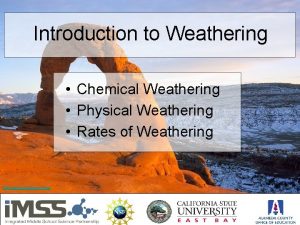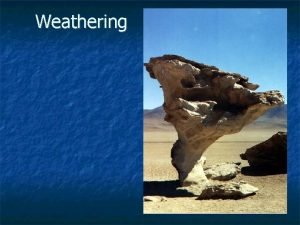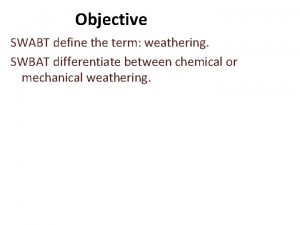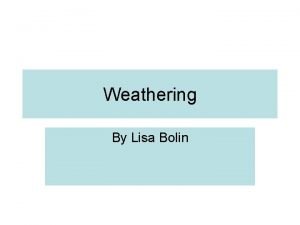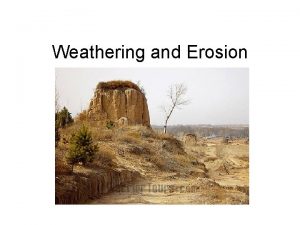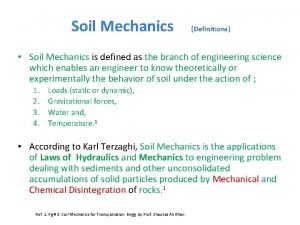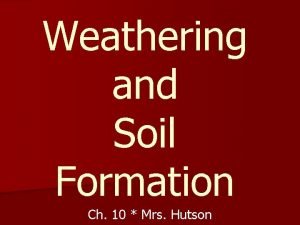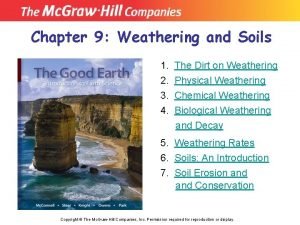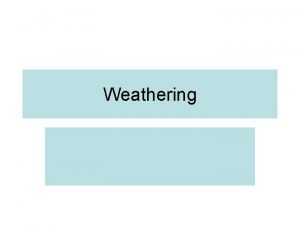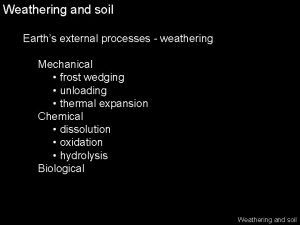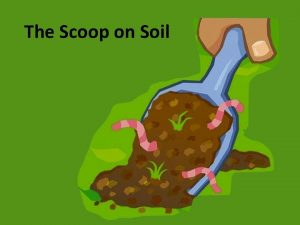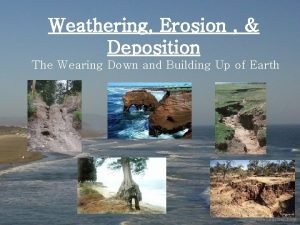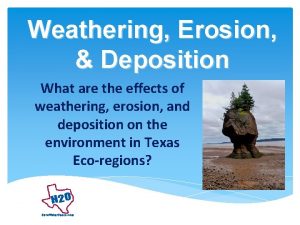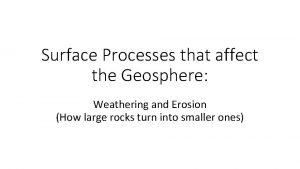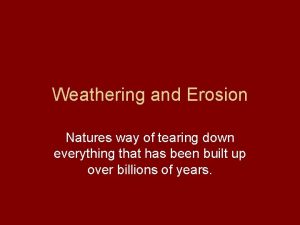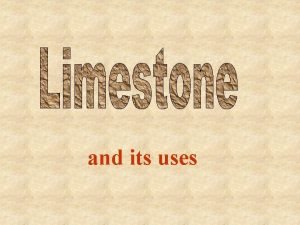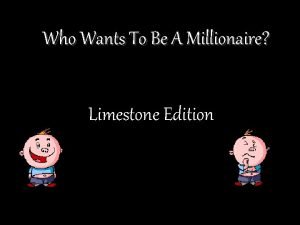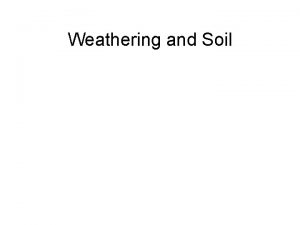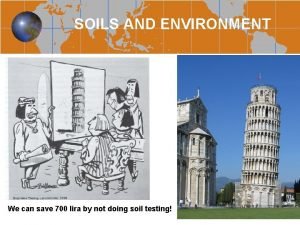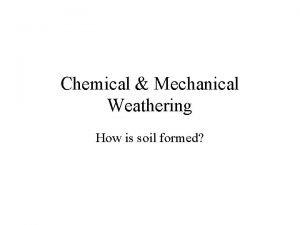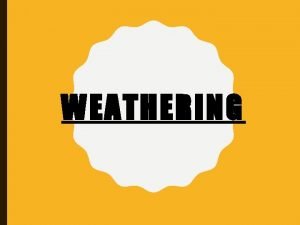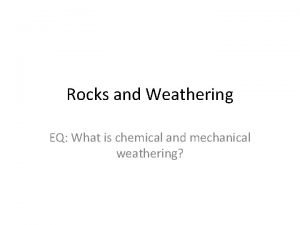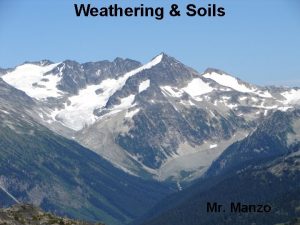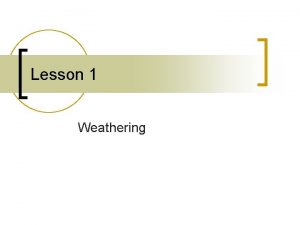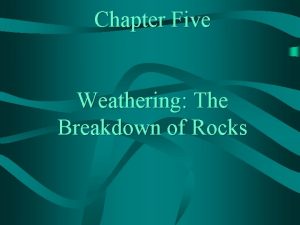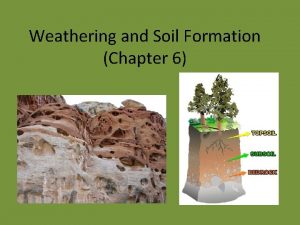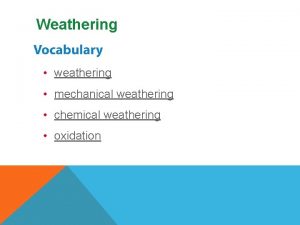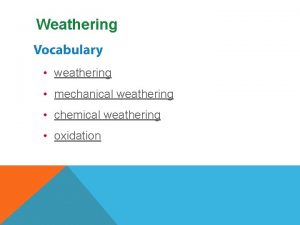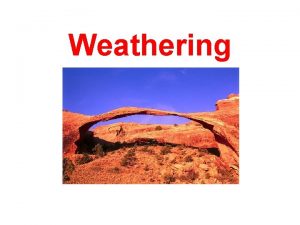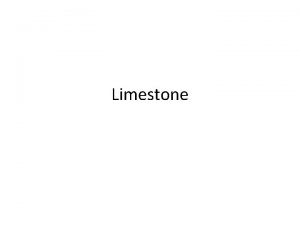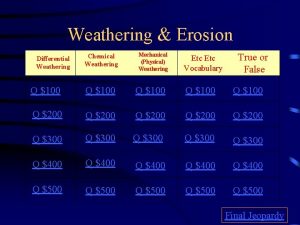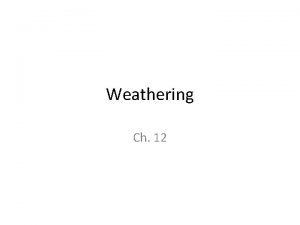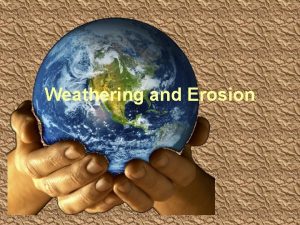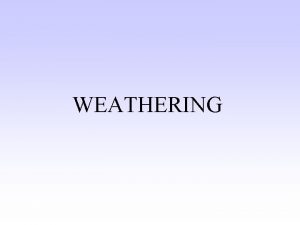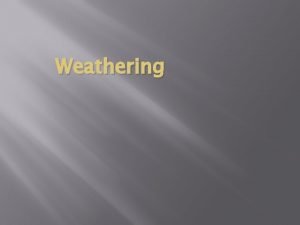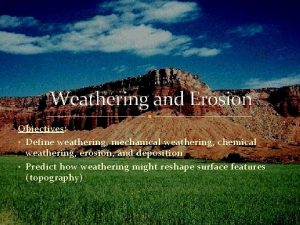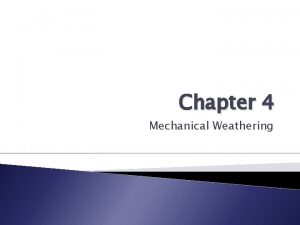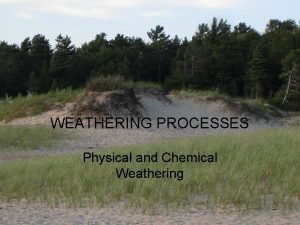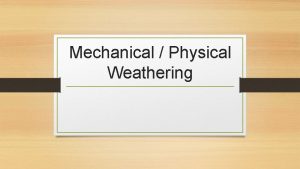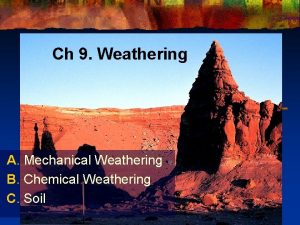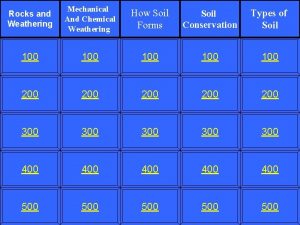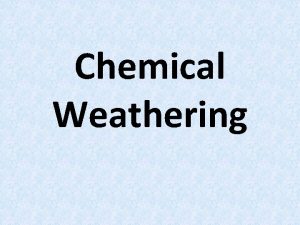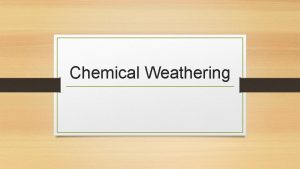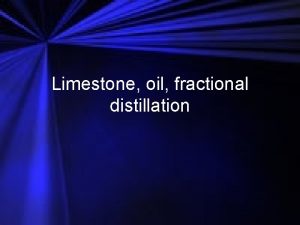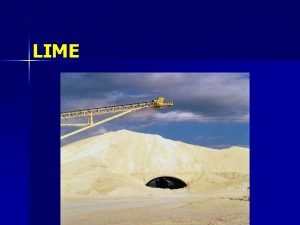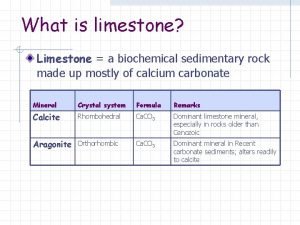Mechanical or Chemical Weathering Limestone Statue Mechanical or



























- Slides: 27

Mechanical or Chemical Weathering? Limestone Statue

Mechanical or Chemical Weathering?

Mechanical or Chemical Weathering?

Mechanical or Chemical Weathering?

Mechanical or Chemical Weathering?

Mechanical or Chemical Weathering?

Mechanical or Chemical Weathering?

Mechanical or Chemical Weathering?

Mechanical or Chemical Weathering?

Mechanical or Chemical Weathering?



Products of Weathering

Sediments • Weathered rock particles.

Sediment Sizes • Arrange these particles from largest to smallest: Sand, Pebble, Clay, Boulder, Cobble, Silt

Page 6 of ESRT

Sediment Size (Continued) • • • Boulder: 25. 6 cm and greater Cobble: 6. 4 – 25. 6 cm Pebble: 0. 2 – 6. 4 cm Sand: 0. 006 – 0. 2 cm Silt: 0. 0004 – 0. 006 cm Clay: Less than 0. 0004 cm

Soils • Two components: weathered rock and organic matter

Soils (Continued) • Parent Material: The rock the soil comes from. • Residual Soil: Bedrock is the parent material. • Transported Soils: Moved by water, winds, or glaciers.

Residual Soil

Transported Soil • Often layers of “sorting” when deposited by streams • Poorly sorted when deposited by glaciers

Soil Profile • Side view of soil layers. • Mature soil: Four zones or Horizons

Put the four horizons in order (Top to Bottom) • A-Horizon: Highly decomposed organic matter and small rock particles (sand or smaller), leaching of minerals to lower layers. • B-Horizon: Larger rock particle, clays and little organic matter, leached minerals deposit in this layer, giving it a reddish brown/tan color. • C-Horizon: Consists of partly weathered bedrock. • O-Horizon: Composed of organic matter, dark brown to black in color • R-Horizon: Unaltered bedrock

Soil Profile (Continued) • Not all soil horizons are always clearly present.

• • • 1) O-Horizon 2) A-Horizon 3) B-Horizon 4) C-Horizon 5) R-Horizon

Soil Profile • O-Horizon: Organic matter, dark brown to black. • A-Horizon: Very decomposed organic matter and small rock particles (sand or smaller), minerals have been leached. • B-Horizon: Larger rock particles, clays and little organic matter, deposited minerals cause reddish brown/tan color. • C-Horizon: Consists of partly weathered bedrock. • R-Horizon: Bedrock.

Soils are influenced by Climate • Tropical soils: Minerals leached out by rainfall. • Desert soils: Mineral rich • Arctic soils: Poorly drained, permafrost • Forest soils: O-Horizon is most prominent, yearly leaf collection.
 Differentiate between physical and chemical weathering
Differentiate between physical and chemical weathering Types of weathering
Types of weathering Define the term weathering?
Define the term weathering? Example of mechanical weathering
Example of mechanical weathering Mechanical and chemical weathering venn diagram
Mechanical and chemical weathering venn diagram Define soil mechanics
Define soil mechanics Venn diagram of mechanical and chemical weathering
Venn diagram of mechanical and chemical weathering Mechanical and chemical weathering venn diagram
Mechanical and chemical weathering venn diagram Mechanical and chemical weathering venn diagram
Mechanical and chemical weathering venn diagram Causes of weathering
Causes of weathering Venn diagram of chemical and mechanical weathering
Venn diagram of chemical and mechanical weathering The scoop on soil
The scoop on soil Compare and contrast mechanical and chemical weathering
Compare and contrast mechanical and chemical weathering Mechanical and chemical weathering venn diagram
Mechanical and chemical weathering venn diagram Mechanical and chemical weathering
Mechanical and chemical weathering Mechanical and chemical weathering venn diagram
Mechanical and chemical weathering venn diagram Compare and contrast mechanical and chemical weathering
Compare and contrast mechanical and chemical weathering Limestone used for
Limestone used for Limestone chemical formula
Limestone chemical formula Weathering and its types
Weathering and its types Earth definition
Earth definition Types of chemical weathering
Types of chemical weathering Types of weathering
Types of weathering Types of weathering of rocks
Types of weathering of rocks Oxidation weathering
Oxidation weathering Type of weathering
Type of weathering Whats the definition of chemical weathering
Whats the definition of chemical weathering How rocks turn into soil
How rocks turn into soil
